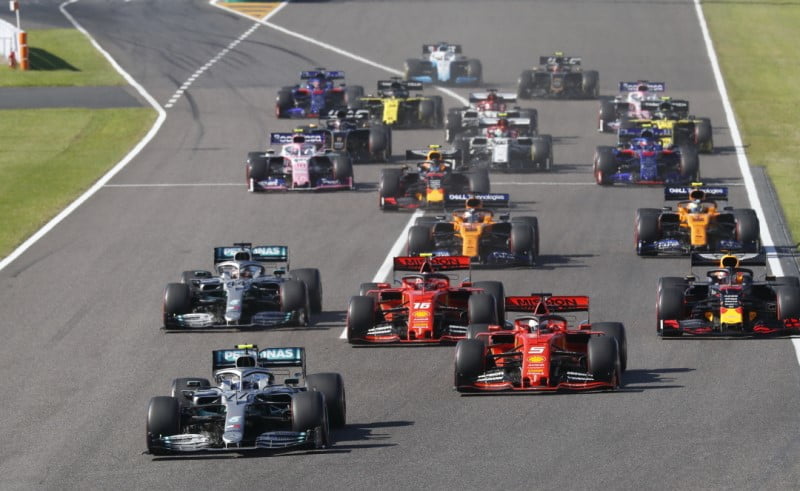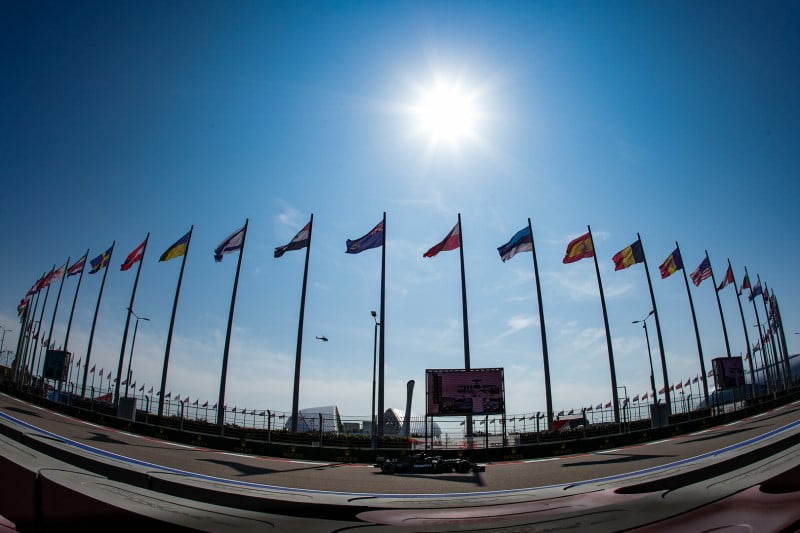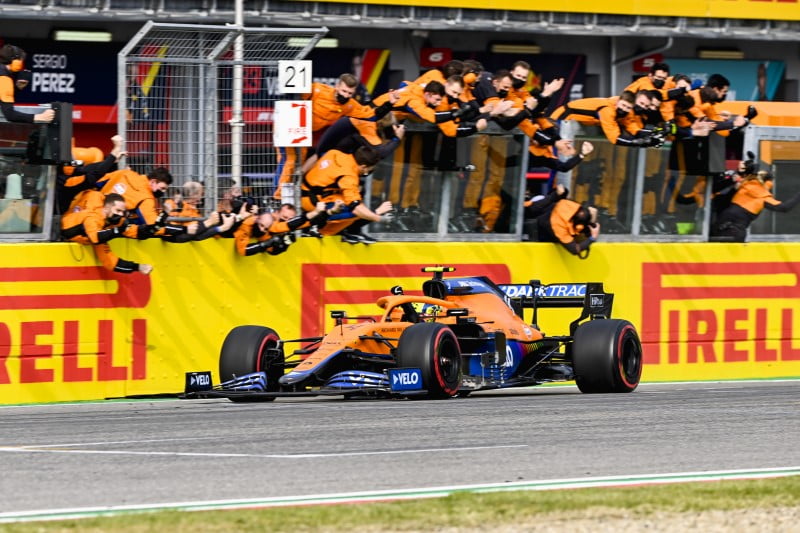- The FIA had its hands full in Japan despite the race weekend being reduced to two days. It wouldn’t be harsh to label the FIA’s performance at Suzuka as ‘less than satisfactory’
- For the fifth race in succession, the Mercedes drivers had no answer to the pace of Ferrari
- Error-prone Ferrari drivers converted a 1-2 at the start grid to a 2-7 at the finish line
A busy weekend for the FIA
Finally, the FIA had its hands full despite the race weekend being reduced to two days. First, it was the lengthy investigation into Vettel’s start followed by the explanation to not penalise the Ferrari driver. It was only a fortnight ago in Russia where Kimi Raikkonen received a stop-go penalty for a similar transgression. Hence, Vettel’s pardon was initially thought of as controversial. Second, was the Leclerc-Verstappen incident on the opening lap. In their first attempt, the FIA opened and shut the case after declaring ‘no further action’. It was only after aggressive radio exchanges between Red Bull-Verstappen that the FIA reopened the case for examination after the race. However, the most embarrassing moment for the FIA was on the final lap of the race when a glitch in their timing system meant that drivers were classified basis their positions on the 52nd lap of the 53 lap race.
Mercedes clinched their 6th consecutive Formula 1 Constructors’ Championship title at the 2019 Japanese Grand Prix — only the second team to manage such a feat after Ferrari (1999-2004). An error-ridden race for Ferrari’s Charles Leclerc saw him mathematically eliminated from this year’s Drivers’ Championship title. This means that Mercedes will make history sooner or later when either Lewis Hamilton or Valtteri Bottas clinch the Drivers’ Championship this season. Mercedes will become the only team in the history of the sport to have achieved the championship double six times in a row!
Before we applaud Mercedes’ prowess and dominance in the current hybrid-turbo era of the sport, one needs to applaud the commendable efforts of the local organisers in hosting the race this weekend despite the Typhoon Hagibis disrupting proceedings. The Japanese organisers and Formula 1 worked together to reschedule this weekend’s sessions — one that saw qualifying be postponed to Sunday morning, and did a fantastic job to secure the circuit and tons of equipment that is required to host a Grand Prix. In fact, the 2019 Japanese Grand Prix might offer Formula 1 much of an insight into reducing the number of days required for a Grand Prix weekend in the future, a decision that might come handy as they work to increase the number of races in the season to 25.
Drivers’ errors cost Ferrari
For the fifth race in a row and for the ninth race this season, Ferrari were the quickest car on the circuit. However, the 2019 Japanese Grand Prix was yet another addition to the list of races that Ferrari failed to win due to driver errors. It is strange that at least one area of Ferrari’s race management falls short time and again — in Suzuka, it was Sebastian Vettel’s almost jump start followed by Leclerc’s coming together with Max Verstappen a few corners after the start. Ferrari converted a 1-2 at the start to a 2-7 at the finish.
Mercedes’ pace vs Ferrari’s track position
In Sunday morning’s qualifying session, Vettel scored a brilliant pole position. This saw him finally end a dismal streak of nine races of being out-qualified by teammate Leclerc. For the fifth race in succession, the Mercedes drivers had no answer to Ferrari’s pace while Red Bull Racing failed to light up the timing screens at Honda’s home race. But could Ferrari actually win the race from the front row? Friday’s race simulation data proved Mercedes’ superiority in the race, but Ferrari had track position for both their drivers — a common storyline from all of the races after the summer break.
Why Same Day Qualifying-Race Won’t Work
Hamilton explained the difficulty of overtaking at Suzuka: “At the moment every race you go to, each weekend there’s a certain distance or advantage you have to have on the car ahead to have an opportunity to overtake. Sometimes it’s like two seconds, sometimes it’s eight tenths of a second. Here it’s over a second and a half you have to have on the car ahead. It’s quite a big delta. That’s why we don’t see a lot of overtaking. With an extra DRS section that (delta) shortens that a bit, so they need to add that.”
Drama for Ferrari on Lap 1
As the five lights went out, Vettel’s go-stop-go at the start cost him the race lead as Bottas rocketed past his Ferrari. Leclerc, who started on the dirty side of the grid, found himself alongside Verstappen (and in 4th) at Turn 2. Unfortunately for both drivers, Leclerc under-steered into the side of Verstappen’s car, causing the Red Bull Racing driver to spin out and rejoin at the back of the pack. Apart from track position, the Red Bull Racing car lost performance from the damage sustained during the crash eventually leading to Verstappen’s retirement from the race.
Not a foot wrong from Bottas
Bottas won the 6th race of his Formula 1 career after out-qualifying Hamilton and snatching the race lead from Vettel at the start. However, after the first round of pit-stops, it wasn’t certain whether Bottas would win the race or Mercedes would use an alternate strategy (one-stopper) for Hamilton giving their star driver a shot at victory. Initially, Mercedes did confirm to both drivers that Hamilton would be one-stopping. Ferrari were the first to blink — they pitted Vettel in an attempt to undercut Bottas. Mercedes covered Vettel’s stop by pitting Bottas. Post-race, the team acknowledged that track position was key — especially given Ferrari’s straight line speed advantage. In fact, Hamilton’s unsuccessful late-race charge for P2 against Vettel would’ve further solidified Mercedes’ decision to pit Bottas when they did.
Excerpts from Mercedes’ Toto Wolff’s post-race explanation regarding the team’s race strategy: “Once you’re in the lead you need to protect your position. If you’re third you can take more risks and more chances. What we did is that we protected the lead with Valtteri and we took the pace out of his race once Sebastian pitted for his second stop.”
Hamilton ‘could’ have won
Bottas-Vettel’s stops saw Hamilton take the lead and pace himself at the front. Mercedes-Hamilton exchanged several radio messages during the race — with Hamilton urging the team to consider leaving him on alternate strategy to help him with the race. He also questioned the team’s decision to not give him the hardest tyre for his final stint. However, Mercedes made the correct call — by pitting Hamilton twice and securing their 6th World Championship title with a 1-3 finish, instead of attempting a risky strategy to finish 1-2. The team’s decision was influenced by the change in track conditions after the typhoon had passed, one that saw tyres drop off the cliff at the end of their life.
Also, Mercedes’ decision to not piss off Bottas, who would’ve lost the race for no fault of his own, was smart. First, it wouldn’t have been an ideal emotion for the team to have while celebrating their historic achievement. Second, Bottas’ cooperation might come in handy next year if Ferrari get their act together. However, Hamilton left Suzuka believing that the race win was his to take on any other day. He summarised the possibility of winning the race on a one-stopper, “With better guidance I think I probably could have.”
Honda’s home race
At Honda’s home race, the Japanese fans had to be content with a fourth and eight place finish, courtesy Alexander Albon and Pierre Gasly respectively. Verstappen’s retirement from the race meant that all hopes were on Albon and the Toro Rosso drivers to deliver a cheer-worthy result. Albon lost positions to both McLaren drivers at the start (thanks to the Leclerc-Verstappen incident), only to get one back from Lando Norris after a questionable move. It was Carlos Sainz Jr who Albon-Red Bull had to fend off during the round of pit-stops — not the team-driver competition they would’ve hoped to fight for positions with. Historically, Red Bull Racing have been stronger in the second-half of the season. However for 2019, the story has been the opposite leading to the Verstappen camp expressing concern about the 2020 Formula 1 season as well.
After taking the challenge to Mercedes in the first-half of the season, Verstappen has struggled in the five races contested after the summer break. In Spa, Monza and Suzuka, the Red Bull Racing driver has suffered from first-lap incidents with Spa and Monza being his own errors. In Singapore and Russia, he’s scored a 3rd and 4th place finish. However, the Red Bull-Honda package is lacking overall pace in comparison to Ferrari and Mercedes.
McLaren on form, again
McLaren’s resurgence has been the talk of the season. At Suzuka, Sainz Jr scored a 5th place finish — his 3rd of the season and took 6th place in the Drivers’ Championship ahead of Pierre Gasly and Alexander Albon. Sainz and Albon are separated by 12 points and this battle will be the one to look out for after the Mercedes drivers settle their scores in the upcoming races. Lando Norris’ race went south after being hit by Albon, else the rookie would’ve scored a good chunk of points too. McLaren’s decision to switch to Mercedes power from 2021 does make one wonder if the former World Champion team will take the fight to the top teams then.
Max Verstappen To Mclaren-Mercedes In F1 2021?
Protest against Renault
The latter part of the 2019 Japanese Grand Prix came alive after Renault’s Daniel Ricciardo went from 11th to 6th place by pulling off a series of overtakes, a bit of help from his teammate Nico Hulkenberg (who finished 10th) and a 15 seconds post-race time penalty for Leclerc. However, a post-race protest from Racing Point F1 Team on Renault’s ‘pre-set lap distance-dependent brake bias adjustment system’ (or automatic brake bias, in simpler words, which isn’t permitted) saw the FIA impound Renault’s ECU (electronic control unit) and steering wheel systems from both cars. Until the inquiry is completed, the FIA declared that the results from the 2019 Japanese Grand Prix would stand. The result of this inquiry should impact the Constructors’ Championship standings of both teams as the season comes to the close. Before Japan, the gap between Renault (5th) and Racing Point (7th) was about 20 points.
Up next is the 2019 Mexican Grand Prix, a race won by Verstappen for the last two years. Moreover, this has also been the venue of Hamilton’s Drivers’ Championship titles in the last two years. The championship gap between the two Mercedes drivers currently stands at 64 points. For Hamilton to seal the deal in Mexico, he will need to be 78 points clear of Bottas. Will Mexico be 3rd time lucky for Hamilton in 2019?
This post was first published on Firstpost














